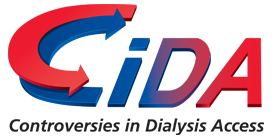Albert S. Jun, M.D., Ph.D., is the Walter J. Stark, MD, Professor of Ophthalmology and chief of the Division of Cornea, Cataract and External Eye Diseases at the Wilmer Eye Institute. He specializes in corneal disorders – including Fuchs dystrophy and keratoconus – refractive surgery (LASIK), cataracts and external eye diseases. Dr. Jun’s clinical and research interests include endothelial keratoplasty, refractive surgery, granular corneal dystrophy, genetic analysis of corneal diseases and corneal gene therapy.
Dr. Jun has received grants and awards from numerous organizations including the National Institutes of Health, the Heed Ophthalmic Foundation, the Eye Bank Association of America and the Association of University Professors of Ophthalmology.
Dr. Jun received his AB from Harvard University in biochemistry in 1990. In 1997, he received his medical degree and his PhD in genetics and molecular biology from Emory University. He completed his residency at the Wilmer Eye Institute from 1998-2001. Thereafter, he completed a Cornea and External Disease Fellowship and a Corneal Gene Therapy Research Fellowship in London, and a Maumenee Clinician-Scientist Fellowship at Johns Hopkins Medicine.
Titles
Chief, Division of Cornea, Cataract and External Eye Diseases
Walter J. Stark, M.D., Professor of Ophthalmology
Professor of Ophthalmology
Departments / Divisions
Ophthalmology – Cornea and Anterior Segment
Centers & Institutes
Comprehensive Marfan Center
Wilmer Eye Institute Research
Education
Degrees
MD; Medicine; Emory University School of Medicine (1997)
Residencies
Ophthalmology; Johns Hopkins University School of Medicine (2001)
Fellowships
Cornea and External Diseases; Moorfields Eye Hospital (2002)
Board Certifications
American Board of Ophthalmology (Ophthalmology) (2003)
Additional Training
AB Harvard University/AB; Biochemistry (1986-1990)
The Johns Hopkins University/Sinai Hospital of Baltimore; Internal Medicine Internship (1997-1998)
Maryland Medical License, Maryland Board of Physicians (2002)
Imperial College School of Medicine, London, United Kingdom; Corneal Gene Therapy Research Fellowship (2002)
The Johns Hopkins Medical Institutions; Maumenee Clinician-Scientist Fellowship (2002-2003)
Maryland Board of Physicians / Maryland Medical License
Research & Publications
Clinical Trials
Extramural Funding
9/10-8/15 Role of unfolded protein response and COL8A2 in Fuchs corneal dystrophy; 1RO1EY019874; National Eye Institute; Role: PI
6/12-5/15 Screening for potential drug therapies for Fuchs corneal dystrophy; J. Willard and Alice S. Marriott Foundation; Role: PI
9/14-8/15 AMPK activation for treatment of Fuchs corneal dystrophy;Eye Bank Association of America; Role: Mentor, PI: Guadalupe Villarreal, Jr., MD
9/14-8/15 Influence of endoreticulum stress caused by UV radiation to the corneal endothelial cells in a mouse model of early-onset Fuchs’ endothelial corneal dystrophy; Japan Eye Bank Association Overseas Grant; Role: Mentor, PI: Tetsuya Toyono, MD, PhD
10/14-9/17 Use of cultured human corneal endothelial cells for keratoplasty; Lions VisionGift; Role: PI
Intramural Funding
8/14-7/15 Proteomic analysis of keratoconus patients from the Kingdom of Saudi Arabia; King Khaled Eye Specialist Hospital/Wilmer Eye Institute Research Grant; Role: Co-investigator, PI: Shukti Chakravarti, PhD
1/15-12/15 In Vitro and In Vivo Treatment of Protein Processing Defect using Dendrimer-Drug Delivery for Early-onset Fuchs Endothelial Corneal Dystrophy; Wilmer Pooled Professors Fund; Role: Co-principal investigator with Liudmila Cebotaru, MD, JD, LLM
Selected Publications
View all on PubMed
Cursiefen, Claus, and Albert S. Jun. 2016. Current Treatment Options for Fuchs Endothelial Dystrophy. Cham, Switzerland: Springer.
PubMed
Academic Affiliations & Courses
Graduate Program Affiliation
Vice Chair for Education, Wilmer Eye Institute (2011-2016)
Activities & Honors
Honors
International Visiting Professor, Bowman Corneal Club- UK
International Visiting Professor, 150th Anniversary of the Dept. of Ophthalmology, Medical University of Graz, Austria
Achievement Award, American Academy of Ophthalmology
Ralph and Sophie Heintz Lecturer, Francis I. Proctor Foundation and University of California, San Francisco
Dolly Green Special Scholar Award, Research to Prevent Blindness
Neil Miller, MD, Medical Student Teaching Award, Johns Hopkins University School of Medicine
Bill Anderson Memorial Lecturer, American Association of Tissue Banking, Savannah, GA
Inaugural Wilmer Scholar Award, Wilmer Eye Institute
Career Development Award, Research to Prevent Blindness
Fellow, Society of Heed Fellows, Heed Ophthalmic Foundation
Boston International Visiting Professor, Harvard Medical School Department of Ophthalmology, VA Boston Healthcare System and the Boston University Department of Ophthalmology, 2019
Memberships
American Academy of Ophthalmology, 1998 – 2016
Association for Research and Vision and Ophthalmology, 1998 – 2016
American Society of Cataract and Refractive Surgery, 2014 – 2015
Professional Activities
Editorial Board Member, Cornea, The Journal of the Cornea Society, 2012 – 2016
Peer Review, American Journal of Ophthalmology
Peer Review, American Journal of Pathology
Peer Review, Archives of Ophthalmology
Peer Review, Biophysical Journal
Peer Review, British Journal of Ophthalmology
Peer Review, Journal of Cataract and Refractive Surgery
Peer Review, Nature
Peer Review, Ophthalmology
Videos & Media
Lectures and Presentations
Moderator, Cornea Surgery
Non-refractive Paper Session, ARVO Annual Meeting, Denver, CO (01/01/2015)
ARVO
Moderator, Corneal Endothelium, Dystrophies
Genetics Paper Session, ARVO Annual Meeting, Denver, CO (01/01/2015)
Organizer
Corneal Transplantation Didactic Session, Johns Hopkins Cataract and Cornea Practicum, Baltimore, MD (01/01/2015)
Johns Hopkins
Moderator
Oxidative Stress in Diseases of the Ocular Surface and Cornea Mini-symposium, ARVO Annual Meeting, Orlando, FL (01/01/2014)
Translational Minisymposium Lecture Series, Lexington, KY (01/01/2015)
Department of Ophthalmology, University of Kentucky
Department of Ophthalmology and Visual Sciences Seminar Series,, Cleveland, OH (01/01/2015)
Case Western Reserve University
Visiting Professor, Rochester, MN (01/01/2015)
Mayo Clinic Department of Ophthalmology
Visiting Professor, Massachusetts Eye and Ear Infirmary, Boston, MA (05/26/2016)
Harvard Medical School
“Surgical treatment for Fuchs dystrophy”
Presentation, 7th Annual Evidence Based Care in Optometry Conference, Baltimore, MD (01/01/2014)
“Fuchs Endothelial Corneal Dystrophy: Pathophysiology and Approaches for Medical Treatment,”
Visiting Professor, Resident Research Day, Nashville, TN (01/01/2014)
Vanderbilt Eye Center
“A century of Fuchs dystrophy,”
Visiting Professor, Ophthalmology Grand Rounds, New York, NY (01/01/2013)
Harkness Eye Institute, Columbia University
“Corneal dystrophies,” “A century of Fuchs dystrophy,” and “Lamellar keratoplasty,”
Visiting Professor, Monthly Regional Ophthalmology Meeting, Tampa, FL (01/01/2012)
University of South Florida and West Coast of Florida
“A Century of Fuchs Dystrophy,”
Visiting Professor, Ophthalmology Grand Rounds, New Haven, CT (01/01/2012)
Yale University
“Pre-operative evaluation and the future of non-surgical therapy”
Presentation, Corneal Dystrophy Foundation Biennial Symposium, Portland, OR (01/01/2011)
Corneal Dystrophy Foundation
“New insights on the etiopathogenesis of ectatic corneal disorders”
Invited Speaker, Therapy for Corneal Ectasia in Infants and Adults session, American Society of Cataract and Refractive Surgeons Annual Meeting, San Diego, CA (01/01/2015)
“Animal models of Fuchs dystrophy: what have we learned?”
Invited Speaker, Dystrophies, Degenerations, and Genetics session, World Cornea Congress VII, San Diego, CA (01/01/2015)
“Fuchs endothelial corneal dystrophy: pathophysiology and approaches for medical treatment,”
Visiting Professor, Seoul, Korea (01/01/2014)
Catholic University of Korea
“Molecular pathogenesis of Fuchs dystrophy”
International Guest Speaker, Fuchs Dystrophy: Pathophysiology, Diagnostics, Progression, and Stage-related Conservative and Microsurgical Therapy Symposium, 112th Annual Congress of the German Ophthalmological Society,, Leipzig, Germany (01/01/2014)
“Descemet membrane endothelial keratoplasty”
Presenter, Video Pearls in Keratoplasty session, Cornea Day, American Society of Cataract and Refractive Surgeons Annual Meeting, Boston, MA (01/01/2014)
“Fuchs endothelial corneal dystrophy: genetics, pathogenesis, and potential non-surgical treatment”
Invited Speaker, Corneal Development, Differentiation, and Genetics Symposium, International Society for Eye Research Biennial Meeting, San Francisco, CA (01/01/2014)
“Why does the cornea bulge in keratooconus?”
International Guest Speaker, Keratoconus: Understanding the Disease and Treatments Symposium, XXX Pan-American Congress of Ophthalmology/XXXVII Brazilian Congress of Ophthalmology Meeting, Rio de Janeiro, Brazil (01/01/2013)
“Keratoconus,” “Lamellar keratoplasty,” “Use of Pentacam in management of anterior segment disease,” “Epithelial and Bowman layer corneal dystrophies,”
International Guest Speaker, Saudi Ophthalmology Annual Meeting, Riyadh, Saudi Arabia (01/01/2013)
“Studies of disease pathogenesis and drug discovery in a mouse model of Fuchs endothelial corneal dystrophy”
International Guest Speaker, Corneal Dystrophy Session, Asia Cornea Society Biennial Scientific Meeting, Manila, Philippines (01/01/2012)
Recent News Articles and Media Coverage
Mentoring as Our Mission: Enhancing Diversity in the Ophthalmology Pipeline, Wilmer Insider (Oct. 2021)
Celebrating Black History Month at Wilmer, Johns Hopkins Medicine (Feb. 2021)
Two-birds-one-stone strategy shows promise in RNA-repeat expansion diseases, Science Magazine (Nov. 2020)
The Power of Artificial Intelligence, Wilmer Magazine (Spring 2019)





